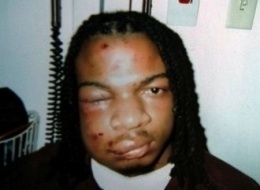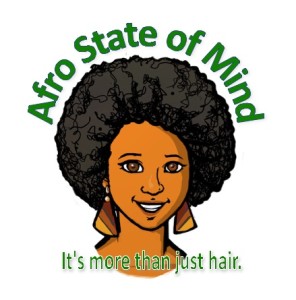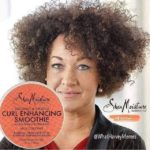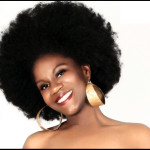(or “The It Is Only Barely Illegal To Illegally Arrest/Beat/Kill Black People” Policing)
I wrote a portion of this piece in February 2010 on what was one of my earlier blogs called The Race and Law Report (shout out to Solo Practice University for helping me navigate the “what is a blog” phase of my life). It was just after the young man featured below, Jordan Miles was brutally attacked by Pittsburgh Police.
And let me tell you – if you thought NYPD police brutality was bad (you’d be correct), you ain’t seeeeen policing intimidation like the kind you see in Pittsburgh, Ohio, St. Louis, America.
Aw man. Who am I kidding? Considering that Eric Garner lost his life while standing on a sidewalk, Mike Brown, Jonathan Farrell, were shot down for the crime of being Black while breathing and well…This is no accident.
It is not new. Until we recognize the fact that policing in Black communities has its roots in slave patrols we will continue to seek “justice” from those who never considered applying it to us. I no longer believe that we can “protest” police brutality away…the history I discuss below has a lot to do with that. I also don’t believe this is just a “bad police” problem. At some point I will address the notion of how “horizontal violence” (Black on Black violence) is in some ways (not all) a far more serious complication that we need to deal with. But for now lets dive into racial profile policing.
Because our lives seem to depend on us knowing what we are dealing with.
What is Racial Profile Policing?

Photo Credit Huffington Post
Jordan Miles, Teen Violinist, After Being Jumped by Police
This is what Racial Profiling Looks Like – But What Is It Exactly?
When we hear the term “racial profiling” we often picture images of Black people being victims of “mistaken identity” or “driving while Black”. But that is far too simple of a definition and minimizes the experiences of the masses of Black people and other people of color.
Racial profiling happens when the police use their power to monitor and enforce the law against people of color differently and with less respect for their rights, than that which is used when White people and White communities are monitored.
Racial profiling happens any time the police act in ways towards Black and minority communities that they know they could not use in a White community.
So we have two forms of policing:
1) White Community Policing (“WCP): where the rules of innocence until proven guilty apply; and
2) Racial Profile Policing (“RPP”): where one is guilty of the crime of being a suspicious person of color – usually Black or Latino – until proven innocent.
This is not an occasional occurrence. Racial profiling is the default paradigm for policing Black communities in particular and communities of color in general. This is not a blind assertion – the statistics tell the story.
Let’s Look at the Numbers:
In New York, for example, in 2006, the NYPD stopped, questioned and frisked 508,540 individuals – a 5x increase from 2002 (97,296) despite flat crime rates. The vast majority – more than 86% – of those stopped were Black or Latino (52% Black, 34% Latino). 90% of those stopped were neither arrested nor issued summonses. This means that when they were stopped, frisked and harassed by the police, they were doing everything right.
Lets think about that again: when half a million people of color are stopped, frisked and harassed by the police, on a regular basis, it happened while they were innocently doing nothing wrong (unless you count being a person of color as a crime).
If half a million White citizens were stopped, frisked and harassed by the police on a regular basis, it would not be called “policing.”
It would be called terrorism.
Jordan Miles – Teen Violinist – Beaten by Cops for Walking with a Soda Bottle
After leaving his mother’s house to visit with his grandmother, Jordan Miles, a superb student and budding violinist, began walking up his neighborhood street. He noticed three men sitting in a car, but thought nothing of it as he continued on his way.
Suddenly, the men jumped out of the car and began shouting:
“Where’s the money?!”
“Where’s the drugs?!”
“Where’s the gun?!”
Seems obvious enough right? Black male walking through his neighborhood…there must be money, drugs and guns on his person. Right? This is the safe presumption, right?
Wrong.
The picture above shows what Jordan looked like after the police finished with him. Oh, and his crime? Carrying a Mountain Dew bottle in his pocket.
Now, typically, one is supposed to be innocent until proven guilty. That is, the White community version of policing would typically find it odd – if not outrageous – for three police officers to jump out at the neighborhood violin nerd who was walking from his mom’s house to his grandmother’s house.
But not in a Black neighborhood. In a Black neighborhood, the RPP version of police monitoring makes it acceptable to have a “take no prisoners” approach and ask questions later.
How We Got Here: “The Casual Slave Killing Act” (aka the “It Is Not a Crime if You Kill a Black Person While Punishing Him/Her” Act.)
Sounds unbelievable right? No American legislative body would ever draft, let alone pass a law that made it lawful to kill a human being while punishing him or her…Would they?
Guess again. While revising its law pertaining to the treatment of slaves, Virginia passed a law entitled the “Casual Slave Killing Act.” Essentially, the law recognized that enslaved Black people sometimes resisted their masters.
Sometimes enslaved Black people insisted in completely unreasonable things like, freedom, or say, the right to raise your kids, or the right to marry whomever you wanted, or the right to not have your wife/husband/child taken to an auction and sold forever, or the right to not be beaten to death.
This new law basically said that if any Black person resisted his/her master (or anyone the master had appointed to punish them), and if as a result of that resistance, the Black person was killed while being “corrected”, that that Black person’s death was not a felony.
While Virginia gets the dishonor of having its law books examined here, this was a commonplace occurrence throughout the Union. Killing Black people simply was not criminal. Certainly not during slavery and one is hard pressed to find examples of Whites being punished (or reprimanded in any meaningful way) for any of the thousands of murders of Black victims at the hand of White communities (i.e. lynch mobs, lynch parties in which White males, females and children either participated in the actual murder of countless Black males, females and children, or watched, applauded and took souvenir pictures as a part of the “lynch show”).
Whether this law was on the books of every jurisdiction or not is not the question. This law – that one (damn near anyone) could kill a Black person if that Black person needed “correction” – was the ethos that permeated every aspect of law dealing with Black people. It was the underlying view that guided all interactions between Black people and the law.
In Georgia, an appellate court had to decide whether or not a white person could be criminally convicted for murder of a Black slave. Neal v. Farmer, 9 Ga. 555, (1851) Writing for the court, Judge Nesbit found that a White person most decidedly could not be criminally convicted for murdering a Black person who happened to be enslaved. Why? Well, in his own words, Justice Nesbit wrote what can best be described as the judicial grant of permission for racial profile policing:
“It is theoretically everywhere and in Georgia experimentally true, that two races of men living together, one in the character of masters and the other in the character of slaves, cannot be governed by the same laws. Whatever rights humanity, or religion, or policy, may concede to the slave, they must, in the nature of the relation, be often different from those of the master.”
And there you have it. The underlying belief that there must be two sets of laws: one that governs White communities and one that governs Black communities.
Emancipation did not change that ethos. Reconstruction did not change that belief. Jim Crow only served to reinforce that idea. Civil Rights changed laws on the books…but not the desire and willingness to engage in racial Profile policing. Now studies show that the darker you are the more harshly you are sentenced.
So there we have it. My heart is so heavy behind these recent incidents y’all. In the eyes of the law and (more importantly) in the eyes of the cops, judges, lawyers who enact the law, we’re still niggers who need to be contained. So what, pray tell, is a fake free enslaved Black person to do?
Let me hear your thoughts in the comments.
*********
Looking for more thoughts from an Afro State of Mind? Check out my book Afro State of Mind: Memories of a Nappy Headed Black Girl now available on Amazon.com in paper back or download the e-book now! And if you want to stay connected follow me on Twitter, “like” Afro State of Mind on Facebook or catch up on my latest youtube videos!





Thank you for this insightful and informative piece. It makes an important connection between the events of today and the historical context. I’d love to see a deeper analysis of the legal cases and statutes that carry the idea that just living in a black body makes someone an object of suspicion and contempt and a lesser “person” under the law.
By the way, in the first paragraph you say the young violinist’s name is Jordan Davis.